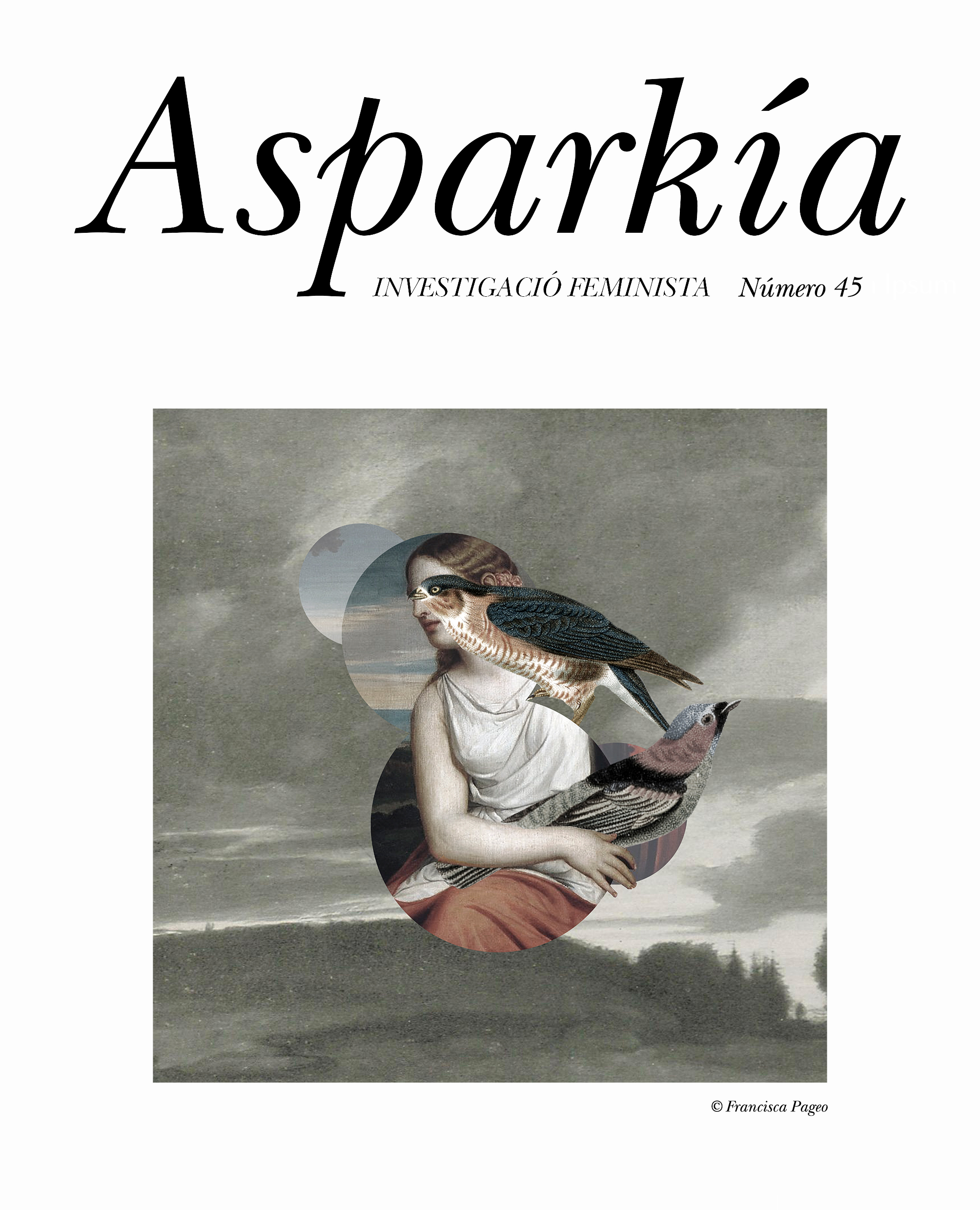Los espacios del yo y la locura: autobiografía, autoficción y animación en «Rocks in my Pockets» y «My Love Affair with Marriage» de Signe Baumane
Contenido principal del artículo
Resumen
Este artículo analiza los dos largometrajes de Signe Baumane, Rocks in My Pockets (2014) y My Love Affair with Marriage (2022). Para ello, este artículo examina las teorías de la autoficción y su representación en diferentes formas y medios, y presta especial atención al potencial de la animación para representar un yo ficcionalizado. Basándose en las teorías de género cinematográficos y de roles de género, así como en el estudio de la memoria y del yo, este artículo muestra cómo Baumane disecciona la construcción del yo femenino y critica la naturaleza opresiva de los discursos individuales y colectivos en torno a la salud mental y la feminidad.
Descargas
Detalles del artículo
Citas
Abraham, Nicolas and Torok, Maria. (2005). The Wolf Man’s Magic Word: A Cryptonymy. University of Minnesota Press.
Aguilar, Carlos. (2023, December 16). In ‘My Love Affair with Marriage,’ Signe Baumane Explores
Romantic Love: ‘Most Over-Hyped Human Emotion’. IndieWire.
Batkin, Jane. (2017). Identity in Animation: A Journey into Self, Difference, Culture and the Body.Routledge.
Baumane, Signe (Director). (2014). Rocks in My Pockets [Film]. Signe Baumane and SturgisWarner.
Baumane, Signe (Director). (2022). My Love Affair with Marriage [Film]. Studio Locomotive,The Marriage Project LLC and Antevita Films.
Berryman, Rachel and Kavka, Misha. (2018). Crying on YouTube: Vlogs, self-exposure and the productivity of negative affect. Convergence: The International Journal of Research into New Media Technologies, 24(1), 85-98. https://doi.org/10.1177/1354856517736981
de Bloois, Joost. (2007). The artists formerly known as... or, the loose end of conceptual art and the possibilities of ‘visual autofiction’. Image and Narrative 19, (19).
Bobrowska, Olga. (2022, July 4). Telling Stories Is Like Breathing: A Conversation with Signe Baumane. Zippy Frames. https://www.zippyframes.com/interviews/signe-baumaneinterview-my-love-affair-with-marriage
de Castro, Colette. (2014, July). Signe Baumane on Rocks in My Pockets. East European Film Bulletin, 43. https://eefb.org/interviews/signe-baumane-on-rocks-in-my-pockets/
Cholodenko, Alan. (1991). The Illusion of Life: Essays on Animation, Volume 1. Power Publications.
Critchley, Simon. (2015). Notes on Suicide. Fitzcarraldo Editions.
Dix, Hywel. (2023). Autofiction and Cultural Memory. Routledge.
Effe, Alexandra and Lawlor, Hannie. (2022). Introduction: From Autofiction to the Autofictional in Effe, Alexandra and Lawlor, Hannie (Eds.), The Autofictional: Approaches, Affordances, Forms (pp. 1-18). Palgrave.
Farrant, Marc. (2022). Autofiction, Autotheory, and the Neoliberal Contemporary. American Book Review, 43(2), 63-67. https://doi.org/10.1353/abr.2022.0046
Ford, Jessica and Macrossan, Phoebe. (2019). The musical number as feminist intervention in Crazy Ex-Girlfriend. Australasian Journal of Popular Culture, 8, (1), 55-69.
Gibbons, Alison. (2017). Contemporary Autofiction and Metamodern Affect in van den Akker, Robin; Gibbons, Alison and Vermeulen, Timotheus (Eds.), Metamodernism: Historicity, Affect, and Depth After Postmodernism (pp. 117-130). Rowman & Littlefield
International.
Greenberg, Slava. (2022). Animated Film and Disability: Cripping Spectatorship. Indiana University Press.
Hatfield, Charles. (2005). Alternative Comics. An Emerging Literature. University Press of Mississippi.
Hirsch, Marianne. (2008). The Generation of Postmemory. Poetics Today, 29(1), 103-128.
Honess Roe, Annabelle. (2012). Animated Documentary. Palgrave Macmillan.
Husbands, Lilly and Rudell, Caroline. (2019). Approaching Animation and Animation Studies in Dobson, Nichola; Honess Roe, Annabelle; Ratelle, Amy and Rudell, Caroline (Eds.), The Animation Studies Reader (pp. 5-15). Bloomsbury.
Johnston, Andrew R. (2020). Abstractions: Episodes from a History of Animation. The University of Minnesota Press.
Johnston, Claire. [1973] (2014). Women’s Cinema as Counter-Cinema in Mackenzie, Scott (Ed.), Film Manifestos and Global Cinema Cultures: A Critical Anthology (pp. 347-356). University of California Press.
Jordan, Shirley. (2013). Autofiction in the Feminine. French Studies: A Quarterly Review, 67(1), 76-84.
Kaplan, Ann E. (1983). Women in Film: Both Sides of the Camera. Routledge.
Klaeger, Florian. (2019). Mimesis in Wagner-Egelhaaf, Martina (Ed.), Handbook of Autobiography/Autofiction: Volume I: Theory and Concepts (pp. 342-349). DeGruyter. https://doi.org/10.1515/9783110279818-044
Kraemer, Joseph A. (2015). Waltz with Bashir (2008): Trauma and Representation in the Animated Documentary. Journal of Film and Video, 67(3-4), 57-68.
Krogh Hansen, Per. (2010). All Talking! All Singing! All Dancing! Prolegomena: On Film
Musicals and Narrative in Grishakova, Marina and Ryan, Marie-Laure (Eds.),
Intermediality and Storytelling (pp. 147-164). De Gruyter.
Lesage, Julia. (1978). The Political Aesthetics of the Feminist Documentary Film. Quarterly Review of Film Studies, 3(4), 507-523.
Levitt, Deborah. (2018). The Animatic Apparatus: Animations, Vitality, and the Futures of the Image. Zero Books.
Matthews, Graham J. (2018). Illness Narratives and the Consolations of Autofiction in Dix,
Hywel (Ed.), Autofiction in English (pp. 125-143). Palgrave.
Méndez, Begoña. (2020). Heridas abiertas. Wunderkammer.
Michael, Olga. (2018). Graphic Autofiction and the Visualization of Trauma in Lynda Barry and Phoebe Gloeckner’s Graphic Memoirs in Dix, Hywel (Ed.), Autofiction in English
(pp. 105-124). Palgrave Macmillan. https://doi.org/10.1007/978-3-319-89902-2_6
Mulvey, Laura. (2011). Women Making History: Gleaning and the Compilation Film in
Arbeit, Marcel and Christie, Ian (Eds.), History Today? New Ways of Representing the Past (pp. 27-38). Palacký University Olomouc.
Pikkov, Ülo. (2010). Animasophy: Theoretical writings on the Animated Film. Estonian Academy of Arts.
Sánchez-Navarro, Jordi. (2020). La imaginación intangible: Una historia esencial del cine de animación. Editorial UOC.
Schmitt, Arnaud. (2022). The Pragmatics of Autofiction in Effe, Alexandra and Lawlor, Hannie (Eds.), The Autofictional: Approaches, Affordances, Forms (pp. 83-99). Palgrave.
Smith, Susan. 2018. The Animated Film Musical in Knapp, Raymond; Morris, Mitchel and Wolf, Stacy (Eds.), Media and Performance in the Musical: An Oxford Handbook of the American Musical, Volume 2. Oxford University Press.
Uhl, Magali. (2018). Explorer l’intime familial à travers la reconstitution : Stories We Tell, Sarah Polley (2012) in Berthet, Frédérique and Froger, Marion (Eds.), Le partage de l’intime : Histoire, esthétique, politique : cinéma (pp. 131-148). Les Presses de l’Université de Montréal. https://doi.org/10.2307/j.ctv69tc8f.9
Walden, Victoria Grace. (2019) Animation and Memory in Dobson, Nichola; Honess Roe,
Annabelle; Ratelle, Amy and Rudell, Caroline (Eds.), The Animation Studies Reader (pp. 81-90). Bloomsbury.


